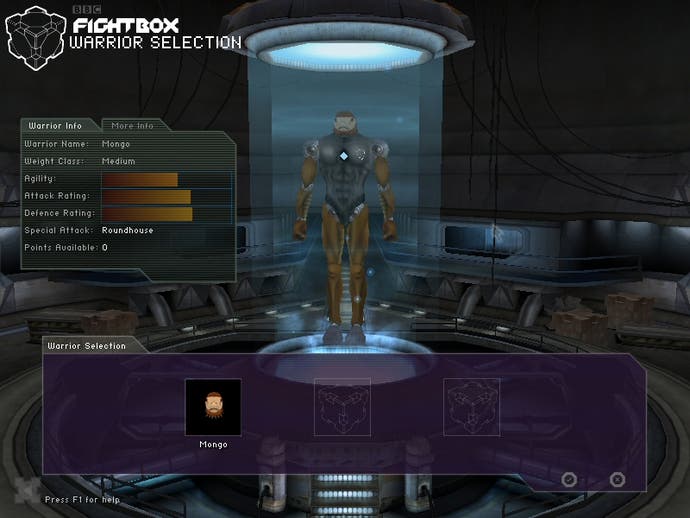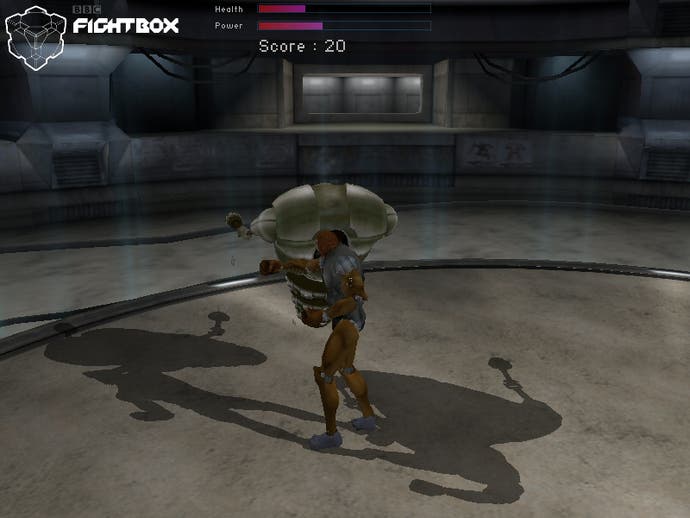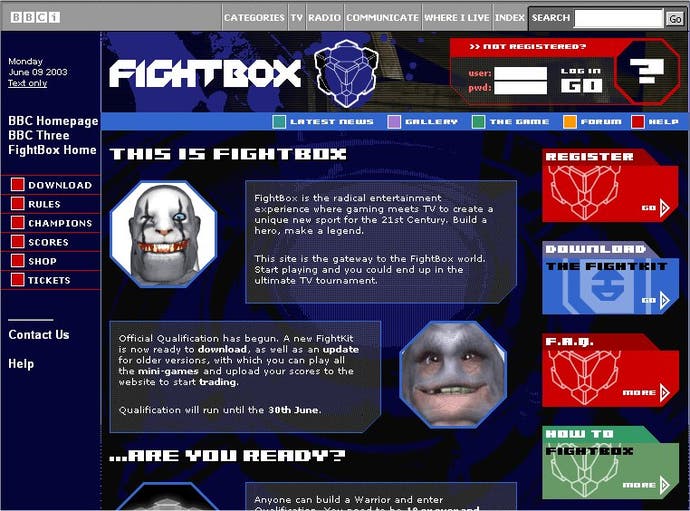FightBox
All thanks to the unique way the BBC is funded.
Gaming and television haven't enjoyed the best of relationships over the years. And although we're finally starting to escape the traditional perception of gaming as an anti-social pursuit reserved for outcasts and loners, gaming and TV still make poor bedfellows, siring badly researched, under-funded and generally weak offspring, seemingly designed to patronise the audience.
In fact, we can only recall two gaming programmes that ever did us justice: GamesMaster, during the latter stages of Dominik Diamond's stint in charge, and some of the earlier editions of Bad Influence. Recent efforts like Cybernet failed because they were on at ungodly hours and had about as much integrity and genuinely interesting content as a used tissue. As for the digital Game Network: pure, unintentional comedy.
Watch With Mofo

So then, it's with an equal measure of dread and intrigue that we cast our spotlight in the direction of the latest merger of two entertainment mediums, this time from the BBC. As opposed to offering actual gaming coverage though, FightBox is the corporation's attempt at fusing gaming, TV and web technologies in the guise of a kind of future gladiatorial sport.
To start with, would-be competitors sign up and download FightKit software from the FightBox website, and get to work on creating their virtual warrior. Each warrior is made up of separate components; hands, arms, torsos, heads, legs and feet are all interchangeable and skinnable should you be unhappy with the prefabricated warriors or one of their body parts in particular. The interface is quite intuitive, and the game goes a long way to explaining exactly what it is you're supposed to be doing. Before long you'll end up with your very own hideous creation - like our mate Mongo here in these screenshots - which you can then enter into battle.
After you've suited up your warrior, you send him into one of the three training areas designed to get you used to the controls. The first area is a small arena, like a space-age sumo ring, in which you set about knocking seven shades out of persistently respawning floating laser-firing droids. You are sometimes able to duck underneath their shots or leap over them on your way to bashing them with kicks and punches, but as you play the controls begin to give themselves away as something less than fluid.
Suited and booted

Or rather, it's not the control scheme that's the problem; it's simply the way your character reacts to your input. This is mostly thanks to its insistence on completing the current animation before moving on to the next. Rather than slickly leaping from side to side, ducking and weaving and running rings around the dense training opponents, our warrior lurched forwards and stubbornly strafed left and right very very slowly, receiving minor laser burns to the face every so often. Confusingly, while there is a run function, this only applies to forward motion, so swift sidesteps are quite impossible. The best tactic is running forwards in a wide circle until your warrior has flanked the slow-moving drones, and then beating the living daylights out of them by slowly kicking and punching with the left and right mouse buttons. There doesn't appear to be any real method to the combat; it's just a matter of punching and kicking as much as you can. Repeat until bored.
The second of the training areas is designed to teach you "advanced control", and is comprised of platform jumping. There are stationary platforms, platforms that rise and fall, and platforms that move from side to side. The aim is to run and leap around a course of platforms lap after lap, although this is easier said than done thanks to a dodgy third person camera and shoddy collision detection, which regularly sent our warrior plummeting into oblivion for no good reason. We were also hindered by the sludgy controls, rendering the challenge far harder than it needed to be.
The final mode to play through is the Gauntlet, which has you running along a narrow obstacle course and ducking beneath platforms and spinny arm things, which try to and regularly succeed in knocking you over. This, too, is a lap-based contest, with points awarded both for general progress and lap completion.
Sorry, you didn't qualify

Once you're confident in your abilities in the training modes, you enter the qualifying practices to earn points. The qualifying games are exactly the same as the training modes, except with a few extra hazards thrown in for good measure. The combat arena has temporary power-ups to aid your fighting skills, and the Platform and Gauntlet modes become populated with droids attempting to catch you out with some stray shots and laser beams. The points you earn in the qualifying practices can be uploaded to the FightBox website and spent on upgrading the components of your warrior. You can get up to four levels of different components, which will improve your speed, defence and attacking capabilities.
Once you've souped up your warrior, you can start qualifying for real. You can have up to three attempts at each activity, after which your highest score is stored on the FightBox website. Unfortunately, the security on the BBC's score servers appears to be extremely flimsy, and naturally cheaters have managed to crack the game and submit some ridiculously unrealistic scores, putting the future of the game into question - at least until auntie Beeb does something about it.
Assuming the cheating is sorted out come June 30th, the top scoring contestants will apparently be chosen to appear on the BBC Three/BBC2 television show, in which their warrior is created for real and will be pitted against other contestants and the show's existing Sentinel warriors, in what sounds a bit like a next-generation Robot Wars. Whether or not the BBC intends to delay the proceedings in order to fish out the cheaters and get its security up to scratch isn't apparent just yet.
KO
While the idea is indeed an interesting one, what we've played so far really hasn't whet our appetite much for what's to come. A tightening up of the controls and some more imaginative tasks could have gone a long way to attracting more traditional gamers, but the initially whimsical experience doesn't leave us much hope for a lasting or even particularly entertaining programme, and the lack of qualifying security suggests that the Beeb doesn't really know what it's doing yet. Cue more licence fee input, eh?

